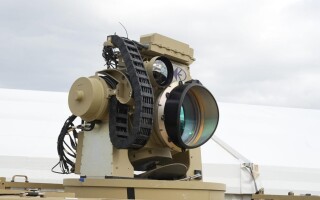Capacitive load switching sources in military systems: How to extend relay switching life and reliability
StoryNovember 15, 2017
With high-performance electromechanical relays continuing to play an important part in military and aerospace applications, it is important for engineers to capture all the electrical requirements. A critical area is extending relay switching life under capacitive transient high inrush current conditions by complying with manufacturers' relay product performance specifications. Capacitors generate high current surges that can adversely affect circuit performance in such applications. These transients, while very brief in nature, can dramatically exceed the steady-state ratings for the contacts in a high-performance electromechanical relay.
When capacitive loads are properly identified and contained by the customer within the relay capabilities, a higher degree of application-relay compatibility can be achieved. Adapting the relay circuit design with current inrush reduction components can mean substantial reduction of capacitive transient high current loads and can increase relay contact life and ensure a relay utilized within its rated product performance specifications will meet the load switching requirements of the end application.
Capacitive inrush contact damage
Occasionally in military and aerospace relay switching applications, surprising sources of capacitive inrush can appear. One example would be the rapid heating and cooling of the material used in the relay, likely due to a very high current pulse of very short time duration, which exceeded the product’s performance specification. Such overage can lead the contacts’ material to fuse and separate, resulting in erratic operation.
Capacitance comes from where?
While very large electrolytic capacitors lead the engineer to expect high current surges, there are often other, less easy to identify, capacitive sources in circuits. Capacitors are passive devices that resist instantaneous voltage changes while allowing instantaneous current changes that quickly absorb and release large amounts of energy as current surges.
One seldom-recognized source of high capacitance and inrush current is the EMI [electromagnetic interference] filtering common in DC/DC switching power converters for military and aerospace applications. (Figure 1.) From the rapid ON-OFF switching of the converter, large, discontinuous current changes are induced that require substantial filtering to reduce conducted high-frequency EMI noise. The popular solution is the use of low pass filters on the input and output of the DC/DC converter.
Figure 1: Block diagram of a typical DC/DC converter.
NTC current limiter devices
There is a class of resistive devices that can offer substantial current surge limiting. The specialized resistor is known as an NTC, or Negative Temperature Coefficient thermistor. It offers high initial resistance that drops quickly to a much lower value as the device temperature increases from current flow.
At room temperature, the high initial nominal resistance limits the inrush current peak by quickly absorbing the energy and dissipating it over a thermal time constant. The resistance of the current limiter NTC drops by a factor of 30 to 50 times from its initial value. After removal of the power source, the NTC devices used in the following experiments return to room temperature in approximately five minutes, according to the thermal time constant curves in the following graphic (Figure 2).
Figure 2: NTC thermal time constants.
NTC testing: repetitive cycling effects
NTC devices internally self-heat over a relatively short thermal time constant while dramatically reducing their internal resistance. Rapid pulsing of the NTC showed how sensitive and rapid was the response to self-heating temperature. When the 5 ohm NTC was tested with four pulse events in less than three seconds, the initial peak current level increased from 5.4 A to 8.5 A, an increase of 57 percent. The thermal time constants of NTC devices are often addressed by using them only during the initial inrush current pulse level, and then allow cooling, which in effect “resets” the NTC for the next high-current switching event.
Load-testing NTC current limiters
It was decided to set up the test to represent the input and output EMI filters and the input and output DC/DC converter capacitors and inductors. The total capacitive load measured was 717.6 uF for the development board since effectively all the filtering capacitors are in parallel. The procedure to test the development board involved supplying DC coil drive voltage through selected switches to provide the ability under load switching conditions to disable/enable each value of NTC device.
NTC load-testing life configuration
To test the NTC devices, it was determined that the development board required a resistive load on the output. The purpose of the resistive load was to simulate a 300 watt DC/DC converter supplying power to an application. Experimental efforts determined that NTC temperature rise and subsequent changes to internal resistance could be managed by controlling the cycling rate and duty cycle of the switched current pulses during relay life testing. (Figure 3.)
Figure 3: Block diagram: Testing development board.
The NTC switch subassembly has a time-delay subassembly and shunt relay that operated approximately 20 milliseconds after the start of each pulsed coil event, effectively opening the current path through load. This resulted in the relay combinations carrying the step current but not breaking the current path.
The procedure to life test the relays involved supplying 26.5 Vdc coil drive voltage individually switched to six relays. The 26.5 Vdc load supply voltage went to the load enable FCA-325 3PDT 25 A relay. Then it was routed through the NTC Off/On FCA-125 SPDT 25 A relay to individually insert the NTC device or test with no NTC in circuit. The connection of a 3.0 ohm noninductive load resistor powered from a 26.5 Vdc source provided a nominal load of 9 A, or about 239 watts, for switching.
NTC load testing life results
No NTC: The first relay life test was performed with no NTC device in circuit. The relay was cycled at a rate of 20 cycles/minute and showed a sharp, high current transient at the start of the switched event. The pulse reached a peak of 26.8 A with a duration of 680 microseconds as part of the 20.2 ms of make/carry-only current time. The current level stabilized at a steady-state level of 9.2 A. The non-NTC load test was terminated early at approximately 26,000 cycles of the planned 50,000 cycles. This was due to contact “sticking” or tack welding that repeated several times and supported the thesis that unlimited capacitive inrush switching is often the primary cause of contacts sticking.
5 ohms NTC: Individually, each NTC value was used during relay life testing with the highest nominal resistance NTC of 5 Ohms having the greatest peak current inrush reduction. The peak current level started at 4.80 amps, a reduction of over 82 percent from life testing without any NTC in circuit. The peak current pulse length duration was measured at 3.84 ms, which then decayed to the step current of 3.20 A. The make/carry-only pulse length was measured at 18.20 ms at the start of the testing.
Test measurements were recorded again at an intermediate period and the conclusion of the 50,000 switching cycles and then compared to the initial readings. Due to the thermal characteristics of the NTC devices, slight increases in the operating temperature substantially affected the peak current level as it increased over 58 percent, to 7.60 A. It was confirmed that the step current level increased by 38 percent, to 4.40 A.
NTC life testing summary
Peak inrush and steady-state step current levels waveforms were analyzed for any substantial trends. As expected, the rapid cycling of the NTC/relay combination did elevate the respective peak and step current levels over time; however, even the lowest NTC value kept the inrush below the maximum relay contact ratings.
The testing showed that the peak inrush current had the largest gain of 36 percent for one ohm NTC, increasing to 58 percent when 5 ohms NTC was in circuit. The step current increase was much more modest and ranged from 6 percent to a maximum of 38 percent. The NTC external case temperatures were compared during the testing and had a very slight 6 to 7 °F, or 8 to 10 percent rise, above ambient. The slight change in NTC temperature confirmed that it would affect the peak and step current levels during relay life test cycling.
Contacts evaluation, post-NTC life testing
At the conclusion of life testing, each of the five relays were removed from the NTC/relay switching board and electrically tested to confirm that each met post-life test parameter limits. Review of the normally open and moveable contacts in the first relay illustrated substantial contacts material erosion and transfer as expected. This relay switched the full capacitive load without any NTC current limiting with testing stopped at 26K cycles, well short of the 50K cycles due to repeated contacts tack welding. There were visual signs of contact material adhesion and breakaway on the moveable contact that contributed to tack welding and likely mechanical binding of the moving contact surfaces.
Quite a different visual story was told when the relays with NTCs in circuit were opened and analyzed. The relay switching the load through 1 ohm NTC had material transfer reduced by an estimated 40 to 50 percent and substantially reduced the “cone and crater” affect. Moving through the tests, the relay switched through the highest resistance NTC, 5 ohms, had slight buildup of material on the normally open contacts and smaller corresponding crater on the moveable contacts. (Figure 4.)
Figure 4: Contacts evaluation: (left) Without NTC, (right) with 5 ohms NTC.
Going forward
User applications often involve capacitive loads from common EMI filtering sources. By using NTC devices within their thermal time constant limitations, they were confirmed to substantially reduce the magnitude of the inrush currents and resulting contact material erosion. Experiments demonstrated that the inrush current reduction and reduced contact erosion extended the relay contacts’ switching life when capacitive loads are present by helping the user remain within the relay’s rated product-performance specifications. These improvements can lead to enhanced reliability of the equipment in military and aerospace applications.
Michael Baldwin joined TE Connectivity, CII Products, in 1986 and is currently product applications engineer for the high-performance, aerospace, and high-reliability space relay products. He is a summa cum laude graduate of Western Carolina University, with a Bachelor of Science degree in electronic engineering technology and a Master of Science degree in technology; Mike also received A.A.S. degrees in electronic technology and business administration from Asheville-Buncombe Technical Community College. Readers may contact the author at [email protected].
TE Connectivity www.te.com










